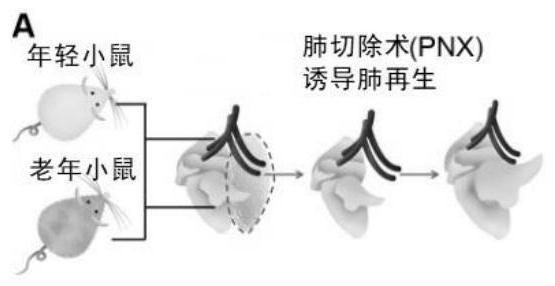Application of EPCR pathway activator in preparation of anti-fibrosis agent
An anti-fibrosis and activator technology, applied in the field of biomedicine, can solve problems such as difficult to prevent or reverse fibrosis
- Summary
- Abstract
- Description
- Claims
- Application Information
AI Technical Summary
Problems solved by technology
Method used
Image
Examples
Embodiment 1
[0079] Embodiment one: materials and methods
[0080] Table 1 Key resources
[0081]
[0082]
[0083]
[0084] Animal care and mouse strains used. Floxed neuropilin 1 (Nrp1) mice and HIF2α (Hif2a) mice and mice lacking tissue inhibitor of metalloproteinase 1 (Timp1), platelet factor-Cre (Pf4-Cre) mice were obtained from the Jackson Laboratory. Expression of EC-specific Cdh5-(PAC)-Cre ERT2 / VE-cadherin-Cre ERT2 The mice were provided by Dr. Ralf Adams; this mouse line was crossed with floxed Nrp1 and Hif2a mice to generate Nrp1 iΔEC / iΔEC , Hif2a i ΔEC / iΔEC and control mice. Four-week-old mice were treated with intraperitoneal (i.p.) injections of 250 mg / kg tamoxifen for 10 days, followed by a one-week break after the 3rd and 6th dose (or 150 mg / kg for 6 days , and break for 3 days after the 3rd time). Quantitative polymerase chain reaction (PCR) confirmed the deletion of the target gene in ECs. Nrp1 iΔEC / iΔEC mice and Hif2a iΔEC / iΔEC Mice and age-matched li...
Embodiment 2
[0098] Example 2: The transition from "regeneration to fibrosis" in the lung of aged mice is related to the formation of "platelet-macrophage" colonies and the reprogramming of endothelial cells
[0099] Experimenters of the present invention use pneumonectomy (PNX) to compare the alveolar regeneration and fibrosis of mice of different ages ( Figure 1A ), including recovery of lung function, epithelial structure, and hydroxyproline content ( Figure 1B -C, Figure 8A -B). 20-month-old mice after PNX showed significant inhibition of alveolar regeneration and increased fibrosis compared to 2-, 3-, and 6-month-old mice. Therefore, the experimenters of the present invention defined 20-month-old mice as "old" mice, and compared the regenerative capacity of aged mice with 2-month-old (2-mon) or 3-month-old (3-mon) mice.
[0100] Platelets and macrophages play an important role in organ repair. Based on this, the experimenters of the present invention made CD41 in mouse lung aft...
Embodiment 3
[0102] Example 3: In aged lung, normalizing the NRP1-HIF2α-EPCR circuit in endothelial cells reduces the transition from "regeneration to fibrosis"
[0103] NRP1 is a co-receptor for various cytokines. In order to explore the role of NRP1 in aging-related fibrosis, the experimenters of the present invention constructed mice specifically deficient in NRP1 in endothelial cells (Nrp1 iΔEC / iΔEC ). Floxed NRP1 mice express EC-specific VE-cadherin (Cdh5)-Cre ERT2 mouse hybrids. Tamoxifen (Tamoxifen) treatment of the offspring deleted NRP1 in the endothelial cells of the offspring ( Figure 8E ). Aged Nrp1 iΔEC / iΔEC Mice received PNX, and 3-month-old (young) mice were compared with aged Nrp1 + / + Mice served as controls. Aged Nrp1 after PNX compared with aged control mice iΔEC / iΔEC Mouse PCECs showed lower HIF2α expression and higher EPCR levels ( Figure 1F , Figure 8F ). Deletion of NRP1 in endothelial cells suppresses the formation of "platelet-macrophage" colonies in p...
PUM
 Login to View More
Login to View More Abstract
Description
Claims
Application Information
 Login to View More
Login to View More - R&D
- Intellectual Property
- Life Sciences
- Materials
- Tech Scout
- Unparalleled Data Quality
- Higher Quality Content
- 60% Fewer Hallucinations
Browse by: Latest US Patents, China's latest patents, Technical Efficacy Thesaurus, Application Domain, Technology Topic, Popular Technical Reports.
© 2025 PatSnap. All rights reserved.Legal|Privacy policy|Modern Slavery Act Transparency Statement|Sitemap|About US| Contact US: help@patsnap.com



